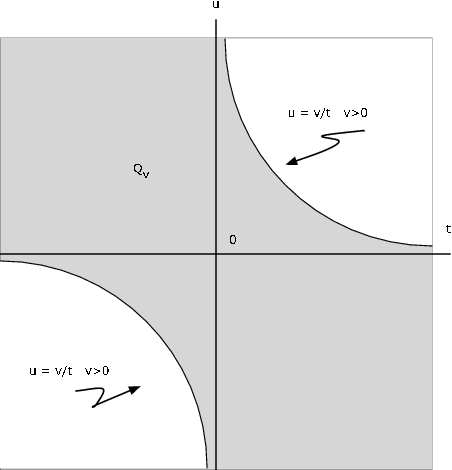| << Chapter < Page | Chapter >> Page > |
% file jdemo3.m data for joint simple distribution
X = [-4 -2 0 1 3];
Y = [0 1 2 4];
P = [0.0132 0.0198 0.0297 0.0209 0.0264;0.0372 0.0558 0.0837 0.0589 0.0744;
0.0516 0.0774 0.1161 0.0817 0.1032;0.0180 0.0270 0.0405 0.0285 0.0360];jdemo3 % Call for data
jointzw % Call for m-programEnter joint prob for (X,Y): P
Enter values for X: XEnter values for Y: Y
Enter expression for g(t,u): abs(abs(t)-u)Enter expression for h(t,u): abs(t.*u)
Use array operations on Z, W, PZ, PW, v, w, PZWdisp(PZW)
0.0132 0 0 0 00 0.0264 0 0 0
0 0 0.0570 0 00 0.0744 0 0 0
0.0558 0 0 0.0725 00 0 0.1032 0 0
0 0.1363 0 0 00.0817 0 0 0 0
0.0405 0.1446 0.1107 0.0360 0.0477EZ = total(v.*PZW)
EZ = 1.4398ez = Z*PZ' % Alternate, using marginal dbnez = 1.4398
EW = total(w.*PZW)EW = 2.6075
ew = W*PW' % Alternate, using marginal dbnew = 2.6075
M = v>w; % P(Z>W)
PM = total(M.*PZW)PM = 0.3390 At noted in the previous section, if is an independent pair and ,
, then the pair is independent. However, if and
, then in general the pair is not independent. We may illustrate this with the aid of the m-procedure jointzw
jdemo3
itestEnter matrix of joint probabilities P
The pair {X,Y} is independent % The pair {X,Y} is independentjointzw
Enter joint prob for (X,Y): PEnter values for X: X
Enter values for Y: YEnter expression for g(t,u): t.^2 - 3*t % Z = g(X)
Enter expression for h(t,u): abs(u) + 3 % W = h(Y)Use array operations on Z, W, PZ, PW, v, w, PZW
itestEnter matrix of joint probabilities PZW
The pair {X,Y} is independent % The pair {g(X),h(Y)} is independentjdemo3 % Refresh data
jointzwEnter joint prob for (X,Y): P
Enter values for X: XEnter values for Y: Y
Enter expression for g(t,u): t+u % Z = g(X,Y)Enter expression for h(t,u): t.*u % W = h(X,Y)
Use array operations on Z, W, PZ, PW, v, w, PZW
itest
Enter matrix of joint probabilities PZWThe pair {X,Y} is NOT independent % The pair {g(X,Y),h(X,Y)} is not indep
To see where the product rule fails, call for D % Fails for all pairs As in the analysis Joint Distributions , we may set up a simple approximation to the joint distribution and proceed as for simple random variables. In this section, we solve severalexamples analytically, then obtain simple approximations.
Suppose the pair has joint density . Let . Determine Q v such that .

SOLUTION (see [link] )

Notification Switch
Would you like to follow the 'Applied probability' conversation and receive update notifications?